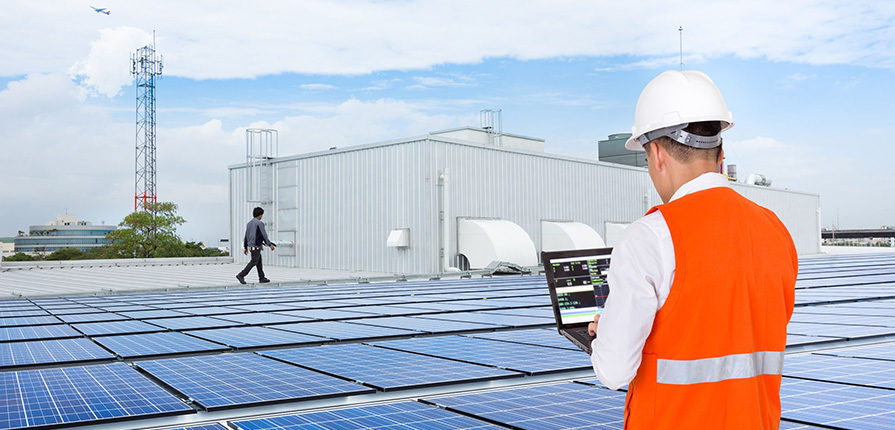I spoke, last week, to a client dealer of mine in the Mid-West. He is considering working with SFA and our new financing program. During that conversation, he told me that he had just contracted with a roofing contractor to partner in the sales and installation of rooftop solar panels. That unexpected comment left me momentarily speechless. Most of us are aware that Vivint is a major player in Solar as well as the second largest alarm company behind ADT. Many also probably think Solar is also like being in the Lock and Key industry. Perhaps, but the necessary business scale for solar is significantly larger.
Will rooftop solar save or cost more money than gas generation?
Major utilities and supporters of large solar farms look to that technology rather than rooftop solar to be the transfer agent to increase our use of renewable energy. Chris Clack, an energy systems researcher, has a different approach. His (and his co-authors) recently released report suggests that eliminating nearly all of models the earths fossil fuel power generation and replacing it with roof-top and local solar plus batteries would generate a savings of $473 billion. Upon reflection, this should not be a surprise. Solar and battery technology have developed dramatically over the last 10-15-years. Clack’s computer model contains 10,000 more data points than traditional models and requires him to run his custom computer system for 5 days to get his results. One of the reasons is the significant investment that has gone into the grid, that interconnecting mass of wire that transports our energy kilowatts from generating stations to each home and business. Yes, that same grid that has been shown to start fires in our national forests. His report further shows that if we had a national policy to reduce fossil emissions in 2050 by 95%, the savings from rooftop and local solar would amount to $301 billion. When Clack optimized his smaller-scale model, he found that the cheapest way to reduce emissions is to build $247 gigawatts of rooftop and local solar (approximately 20% of our current generating capacity). Here consumers would save $473 billion of when compared to what electricity would normally cost. When Clack had his system mimic traditional models that favor Solar and wind renewable sources, he found that consumers would pay $385 billion more for power over the next 30 years. For truth and clarity, it is important to note that Clack’s research was funded by several pro-solar foundations.
Jesse Jenkins, a Princeton researcher, focused his doctoral dissertation on the same issues that Clack is trying to answer. His results, trying to answer the same questions as Clack’s, were not as optimistic, but were still encouraging. He felt that large solar and wind farms were a cheaper way to generate Kilowatts. His report, as lead author of Net-Zero America, also reached the same conclusion, that we could achieve zero emissions by 2050.
What are some of the other factors to be considered?
Before we try to answer any questions, there are several other factors to be considered. The first is the cost of rooftop solar. The cost of this technology has been reduced to where it is arguably close to fossil fuel generated kilowatts, but it also requires batteries to store the rooftop power through the night, cloudy days, and major storms. Battery technology for roof top and solar farms has also improved, but not to the same extent as solar itself. How about the Grid? Virtually the entire country is interconnected with a power grid that is both a marvel and a danger. The maintenance cost on this grid is enormous and the actual loss of power in the transmission is significant. When wind and storms develop, the reliability of the grid is suspect. This article is being written through several power outages. It does not seem that there will be significant movement to solar rooftop until there is a government subsidy to encourage utility participation in the process. The subsidy that the automobile industry has received and is still earning is evidence that technology will follow the dollars. This massive technology shift is a U.S.A. opportunity which will provide employment and value to our economy beyond the greening of our power system. Next month, we will discover how the Vivint example may be one worth following.
Tony Smith is a Past President of the CAA and a former member of the Board of ESA. He is the Founder, President and CEO of Security Funding Associates, a leading industry financial services firm. He may be reached at tsmith@securityfundingsolutions.com or (855) 723-2229.



